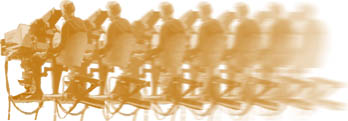Roger worked for many years at Radio London as a producer, but I suspect his true calling is as a stills photgrapher. Type his name into Google and you'll even find him in the National Portrait Gallery. Roger sent a number of appropriate shots from his huge library, which I've lined up here at rather small size. This is to encourage you to click on them to open up the large versions, as they are quality material.
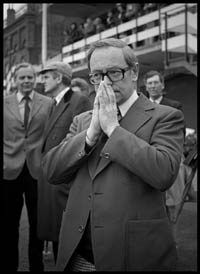
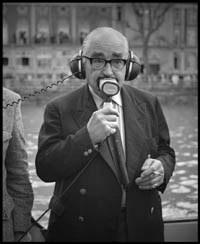
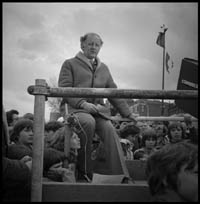
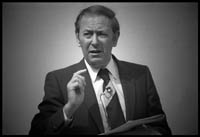
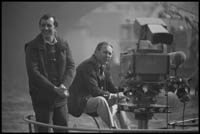
From Peter Ward
I've explained to seemingly gullible people many times that most progress in consumer gear is not because manufacturers want to give us new marvels, but that they just need to sell us different stuff otherwise they go broke.
In TV, colour was an obvious step forward, but from stereo sound on, it's that seven year product cycle driving everything. It's interesting to watch two current ones overlapping, so they can sell us first a CRT widescreen tv, then an LCD or plasma one (though none to me yet). And very soon an LCD HDTV, or possible a DLP one.
In a GTC magazine, Peter Ward coined the very apt phrase "16:9, the shape of a banknote", which I thought was brilliant. I asked if I could re-run his article and it's here. It's a bit longer and more formatted that works well on a webpage, so I've left it as a Word doc.
From Peter Potter
I didn't realise that tech-ops people were so wide spread. Peter sent this -
"Just thought I might put a word in for other Tech-Ops - at BBC Monitoring, Caversham Park, Reading.
We were involved in providing the signals from different radio stations around the world, and, later, television. We used a considerable amount of sound gear, from communicating with outstations to recording programmes where the monitor was not present. Our title was, in 1974, Technical Operator. This changed later to Broadcast Reception Coordinator, without any change in functions, and I don't know what it is now.
Television monitoring was added in the early 90s (via satellite) and this continues virtually unchanged. The stations monitored changed all the time, depending on conflict locations, economic changes, improvements in conditions, etc, all round the world. The Monitoring Service began during the Second World War, concentrating mostly on German, but this was expanded after the war with the growth of communism."
And this from me
This isn't quite a tech-ops story, but recently in an internet news group I contribute to (Google groups DV-L), we were swapping what some Americans called "war stories". I wrote this one. It's nearly tech-ops because I had my dv camera in my hand.....
In the late nineties I made a documentary in a BBC series called "Real Lives", intended to be unidealised looks at various jobs. Mine was about bomb disposal.
It was a DV show, and so I was producer, director,cameraman, editor, etc etc. The only other member of the team was my beautiful 23 year old six foot tall assistant Antonia, soon to be known to the British Army as "Big Bird".
For part of the filming we joined up with a training course "somewhere in England". The second day saw us on a large muddy field where the course were to learn about disposing of suspect ammunition left on a battlefield. What do you do with it? Well, you blow it up. Antonia's job for the day was to stop me walking backwards with the camera and falling down any of the large water filled holes that littered the field.
Late in the afternoon during a tape change Antonia appeared and said "I'm told we aren't allowed to leave without we blow something up, it's traditional", and held up three sticks of plastic explosive she'd just been given.
I proceeded to film her moulding the explosive round various left-over munitions, and then had to retire with the camera because only the person with the detonator (and her trainer, in this case) is allowed to be around when handling such things - so that less people are around when it all goes wrong, I suppose. We then all retired to a bunker, where Big Bird got to blow up her explosives. Then the Army commander told me I wasn't being left out, but as I had the camera they'd done the moulding for me. It was the last of the day, and they'd put all the rest of the explosive in. It made a very good bang when I pressed the button.
In the same film we also got to follow people around disposing of first world war phosgene shells near Porton Down, but the best scene of all was two guys on the training course sitting on a live 1000lb bomb trying to cut discs of sheet plastic explosive with a pastry cutter. It turned out to be too hard, so they used a penknife instead.
I don't know what other companies and countries do, but in the BBC we had to fill in a Health and Safety Hazard form before each days filming. I didn't know quite what to write on those days, so I put "all appropriate Army safety precautions will be taken, and a safety office will be present at all times" - which was entirely true, as he was the one who helped Antonia with the detonator.
